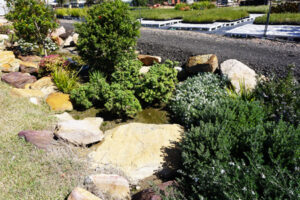
Decade-long research identifies suitable plants for wet conditions
By Todd Layt
Evaluation of survivability of different landscape plants in various wet feet conditions.
Waterlogging has become a significant horticultural topic, particularly as our industry observed Australia enduring three years of exceptional wet conditions, including record floods. In a recent decade-long Australian study, researchers examined the impact of urbanisation and altered land use on ecosystems, particularly related to weather extremes, plant waterlogging, and increased flooding.
The study aimed to identify plant species that can thrive in extreme wet conditions, providing landscape architects with opportunities to create more resilient landscapes in Australian developments. These selected plant species act as buffers against wet conditions, enhancing the usability of the landscape. Additionally, the study highlighted the success of certain drought-tolerant native plants during flooding events. It also identified Lomandra and other species suitable for heavy wet soils, offering specific plant recommendations for Australian bio-retention swales and rain gardens.
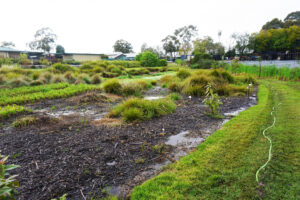
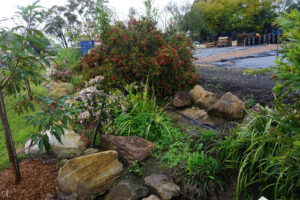
Three testing procedures showcased extreme waterlogging over a 10-year period. Area 1 evaluated plants’ ability to withstand wet feet conditions, while Area 2 examined their effectiveness in bio-retention swales. Area 3 observed plant adaptability in floodplains. Analysing data from six recent floods, the study employed statistical tools such as two-way ANOVA and Pearson correlation coefficients to determine some factors influencing plant survival.
In testing Area 1, which had heavy clay type soil and extreme wet feet conditions, certain plant species showed impressive survival rates. Evergreen Baby Lomandra and Shara Lomandra had a 100% survival rate. However, commercial types of Lomandra confertifolia and Lomandra longifolia performed poorly. Liriope species thrived in the wet parts of Area 1. A root rot treatment trial revealed that treating Lomandra longifolia ‘Tanika’ with Metcalf TdAVC1 & TdAVA2 and RhizoVital 42 from Organic Crop Protectants (OCP) significantly improved survival rates.
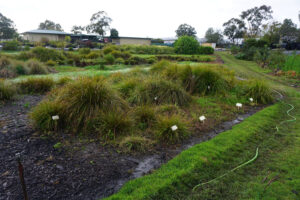
In the Bio-retention swale testing Area 2, Liriope and Rhaphiolepis ‘Cosmic White’, along with native plants like ‘Slim’, ‘Better John’, and ‘Green John’ Callistemons, thrived for 10 years. Wet feet loving ‘Shara’, ‘Evergreen Baby’, and ‘Tropic Cascade’ Lomandras also thrived. However, many plants, including Dianella and Tristaniopsis, did not survive the trial.
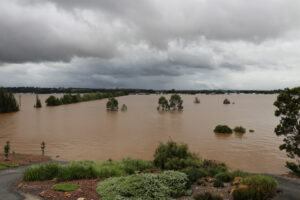
In testing Area 3, the study examined plant survivability in floodplains. Overall, the study emphasised the importance of selecting resilient plant varieties for floodplain landscapes. The number of floods experienced correlated with plant survival, and mature plants had a higher chance of survival compared to young plants. Lomandra, Liriope, Dianella, Nandina, ornamental grasses, Agapanthus, turf grasses, and Callistemon viminalis generally survived well. Hibertia scandens, Murraya, Acacia and many other varieties showed varying results.

The study underscored the significance of breeding wet-feet-loving plants and testing plants to survive extreme wet conditions, highlighting the importance of variety over species when selecting plants. For example, both Grey Box and Mundi Westringia thrived in the wet, while other Westringia varieties did not. These findings offer crucial guidance for landscape planners working in urban environments with wet conditions. They also provide nurseries with knowledge to recommend suitable plants for wet conditions. For the full paper, visit www.ozbreed.com.au and search “waterlogging.”
All images supplied by Ozbreed
